Try our favorite, clean protein powder: See our top pick →
Try our favorite, clean protein powder: See our top pick →
Evidence Based Research To fulfill our commitment to bringing our audience accurate and insightful content, our expert writers and medical reviewers rely on carefully curated research.
Read Our Editorial Policy
Serrapeptase is an enzyme isolated from a non-pathogenic bacteria found in silkworms that has been used for several decades in Japan and Europe as an anti-inflammatory agent.
As more and more benefits of serrapeptase have been uncovered in recent years—ranging from wound-healing to pain-relieving to mucus-clearing—this enzyme has now become widely available as a dietary supplement.
In this article, learn more about how serrapeptase works, the top benefits of this enzyme, and how to supplement with it.
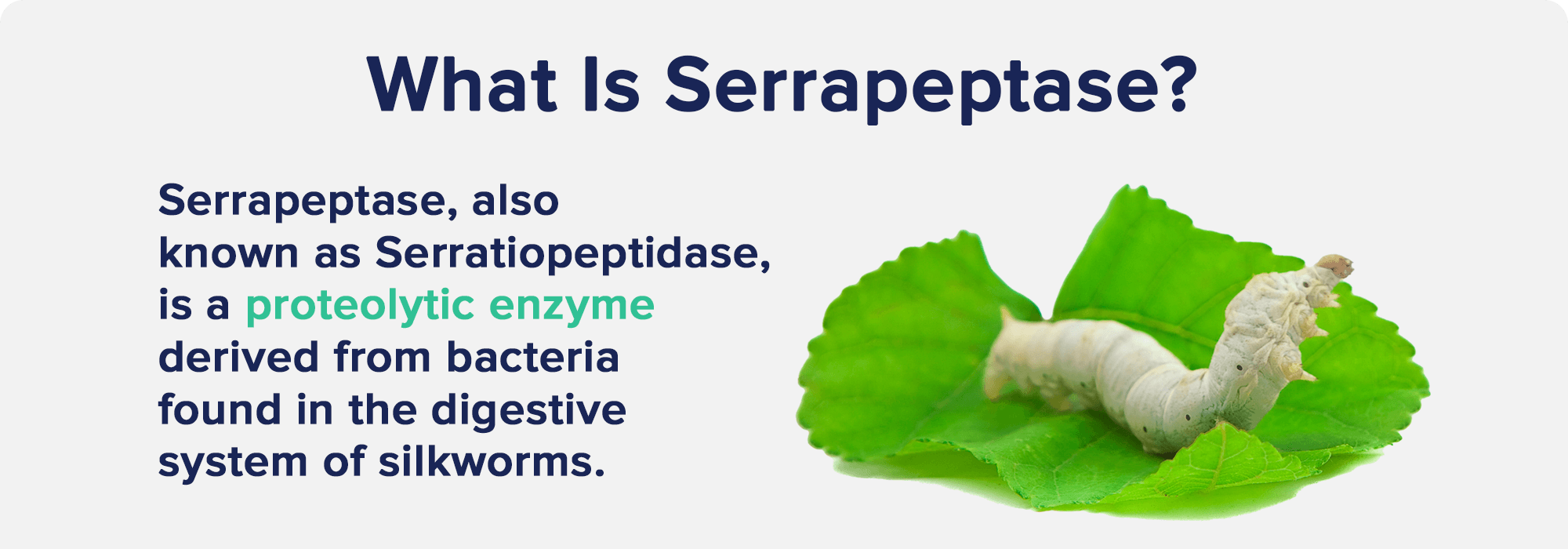
Serrapeptase—also known as serratiopeptidase—is a proteolytic enzyme, meaning it helps to break down proteins.
Interestingly, serrapeptase was initially discovered in silkworms as the enzyme that facilitates the emerging moth to dissolve its cocoon—a feature that we’ll see also has beneficial effects in humans.
Serrapeptase is in good company in the family of proteolytic enzymes, as others like bromelain, trypsin, and chymotrypsin have also been found to have anti-inflammatory activity.
During the 1980s and 90s, researchers in Japan and Europe first identified that serrapeptase effectively reduced inflammation and pain in conditions including surgery, arthritis, sinusitis, bronchitis, carpal tunnel syndrome, and dental issues.
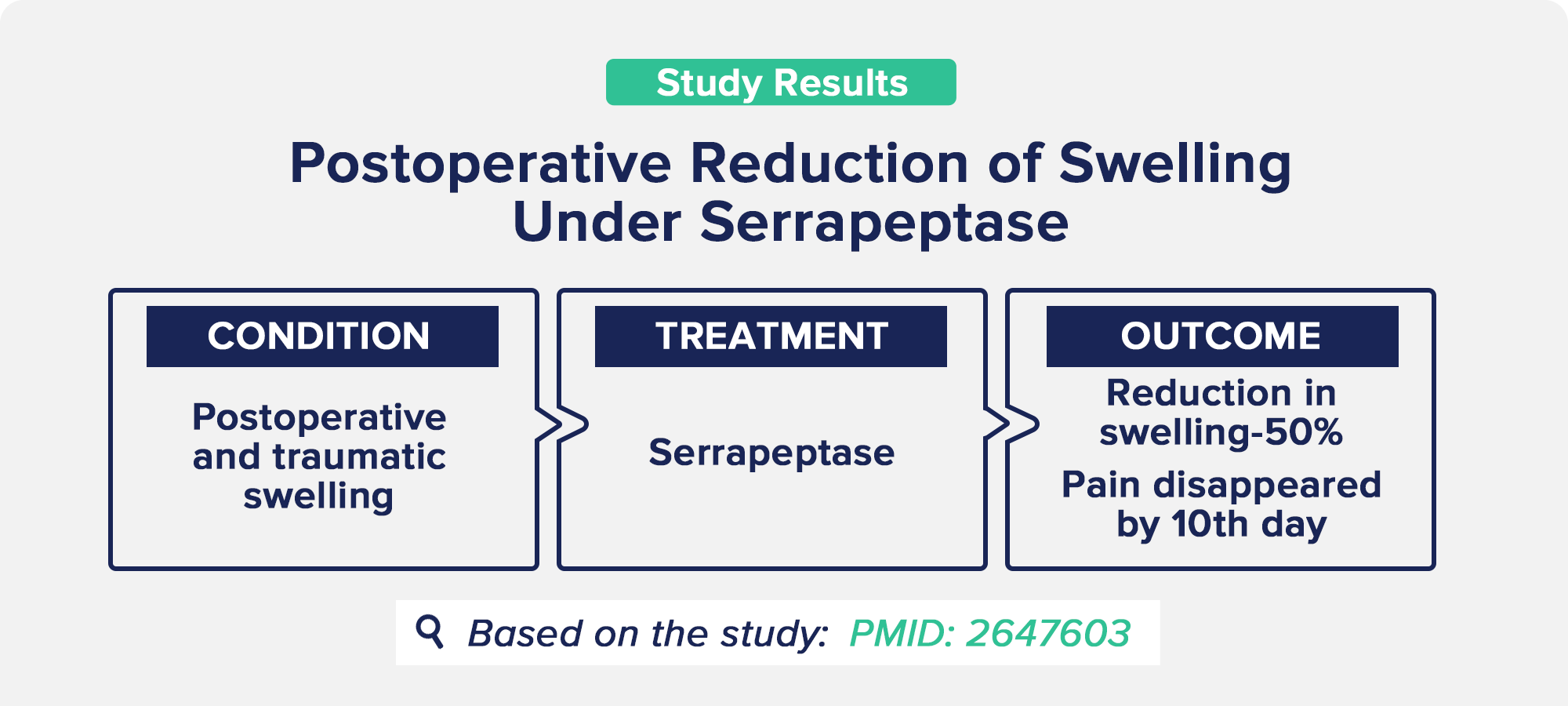
One of serrapeptase’s most well-known benefits is its ability to reduce inflammation, which it does by prompting immune cell movement and regulating levels of white blood cells at the site of inflammation.
Serrapeptase also reduces swelling by decreasing fluid buildup in tissues, improving fluid drainage, and dissolving dead tissue around the injured area (similar to how it dissolves a silkworm’s cocoon).
These factors allow for accelerated healing in the injured or inflamed area.
Serrapeptase also fights inflammation by binding with cyclooxygenase molecules called COX-I and COX-II.
COX-I breaks down arachidonic acid, which then produces pro-inflammatory compounds called interleukins and prostaglandins.
Therefore, serrapeptase can bind to COX-I and suppress this inflammatory release, which is similar to how fish oil acts as an anti-inflammatory agent.
A systematic review identified 24 studies in which serrapeptase positively impacted inflammation in conditions like dental surgery, swelling after sports injuries, venous inflammatory disease, sinusitis, laryngitis, and more.
However, the authors note that most of these studies have subpar methodology, including small sample sizes, short duration, or not comparing serrapeptase to another active compound.
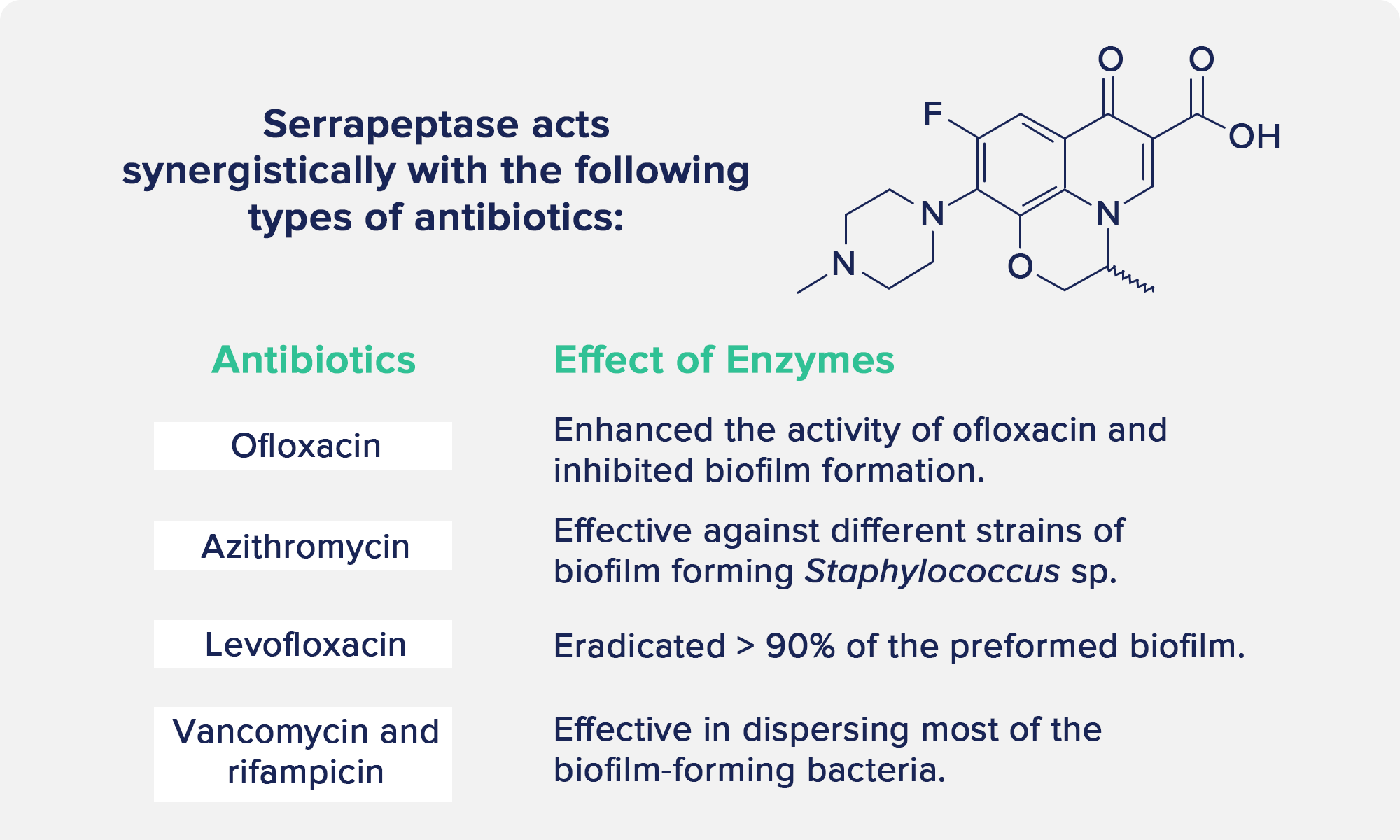
Serrapeptase may be used in conjunction with antibiotics, as it helps to disrupt bacterial biofilms and allow antibiotics to kill the bacteria more effectively.
This is especially true with antibiotic-resistant bacteria, which often have strong biofilms that don’t allow antibiotic penetration.
Research has found that serrapeptase acts synergistically with several types of antibiotics, including penicillin, fluoroquinolone, tetracycline, and cephalosporin.
It also facilitates wound healing by dissolving dead tissue around an injury or trauma site, improving circulation, and draining fluids, all of which improve tissue repair.
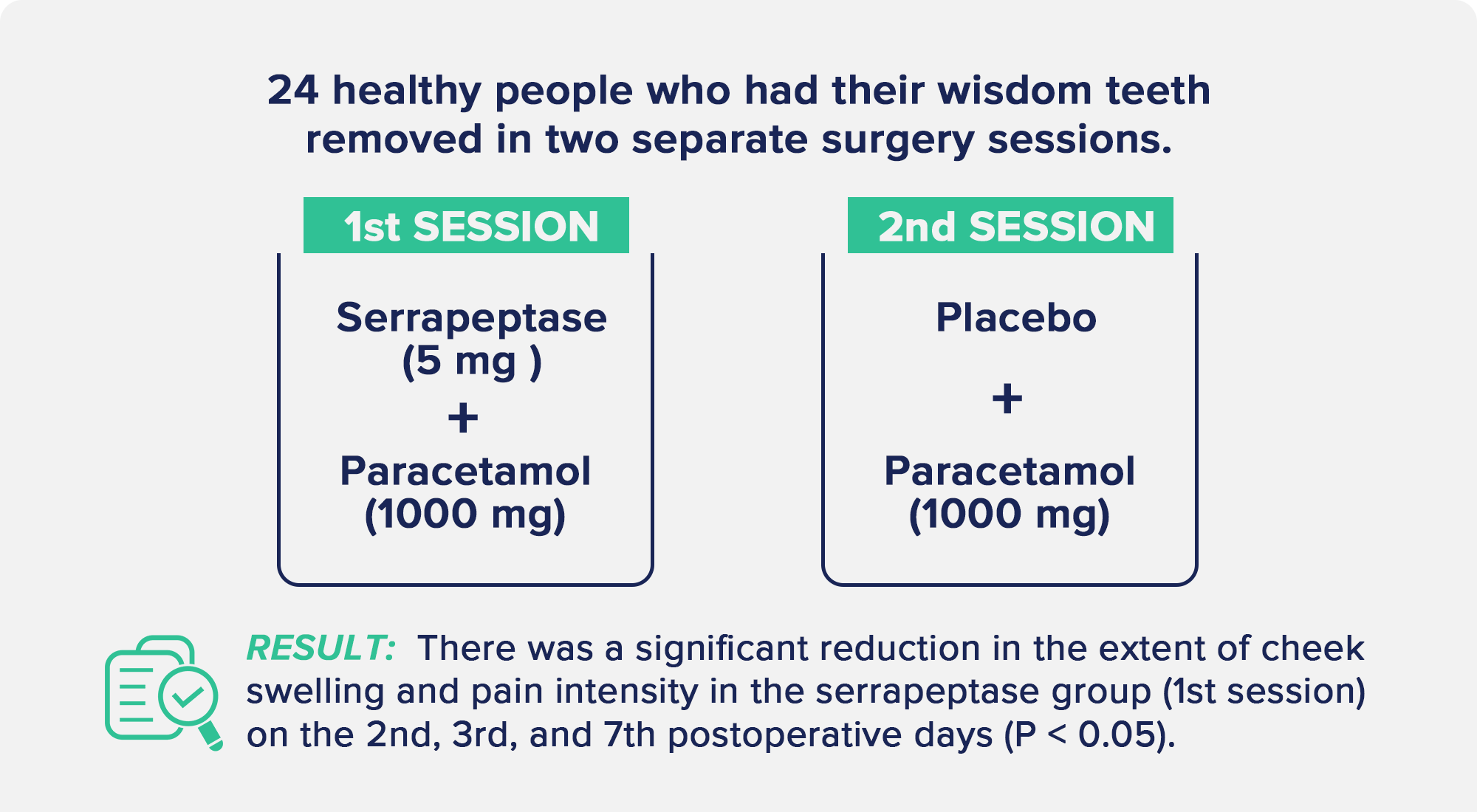
Similar to how it fights inflammation, serrapeptase has also shown promise as a natural pain reliever.
In one study, combining serrapeptase with paracetamol reduced pain after dental surgery more than taking paracetamol alone.
As mentioned, serrapeptase suppresses COX I and COX II activity, which are known to produce prostaglandins that cause pain—this is also how non-steroidal anti-inflammatory drugs (NSAIDs) work as pain relievers.
Serrapeptase also relieves pain by blocking the release of bradykinin, a molecule that causes a pain response.
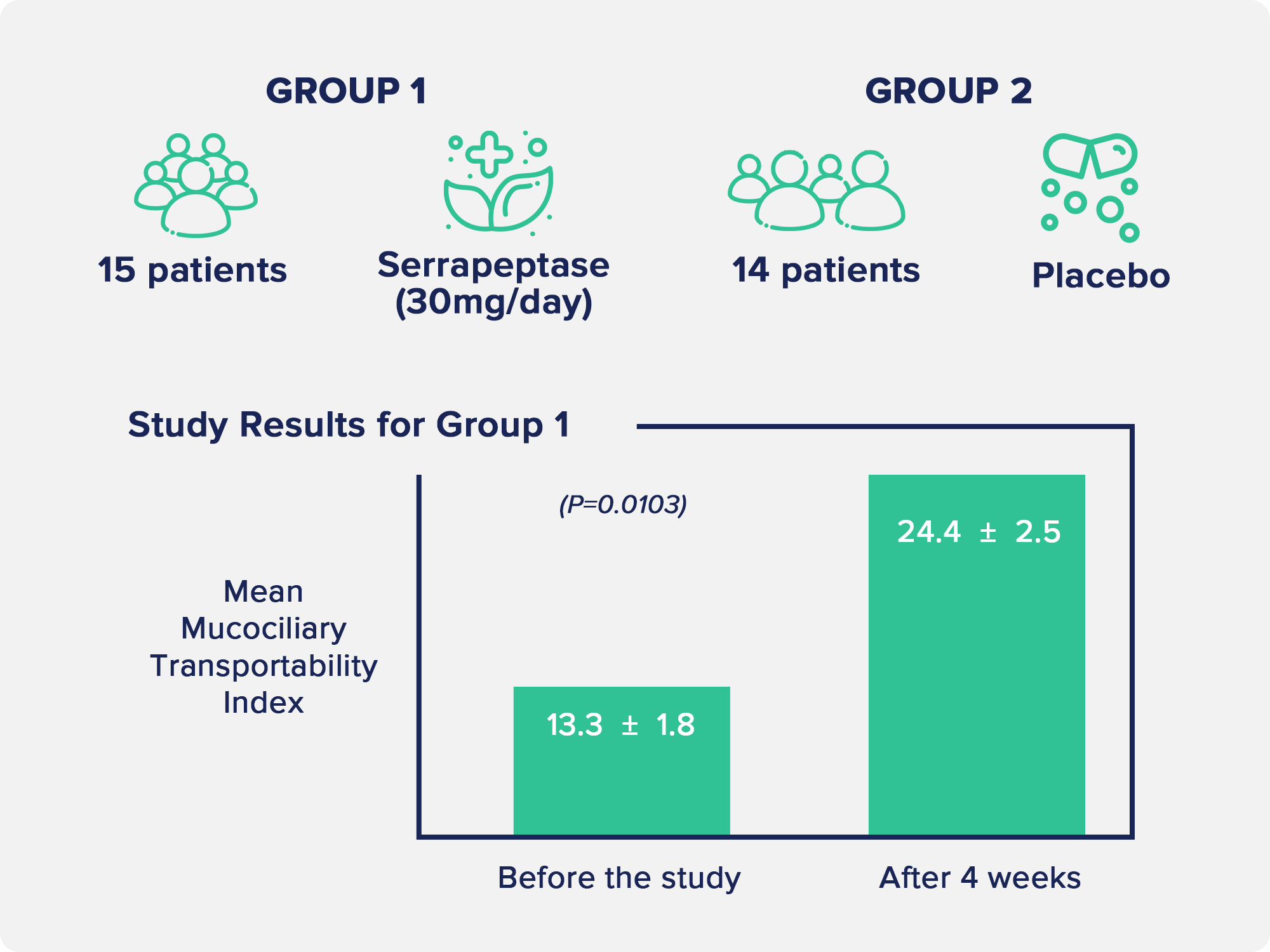
Serrapeptase has exhibited mucolytic—the breakdown of mucus—properties, which may help manage respiratory infections like sinusitis and bronchitis.
It’s thought that serrapeptase does this by reducing neutrophil accumulation.
Neutrophils are white blood cells that increase with infection, causing thicker mucus in areas like the lungs, ears, nose, or throat.
In one study, serrapeptase reduced the viscosity and elasticity of sputum (saliva and mucus coughed up from the respiratory tract) and lowered neutrophil count in people with chronic airway disease more than in those taking a placebo.
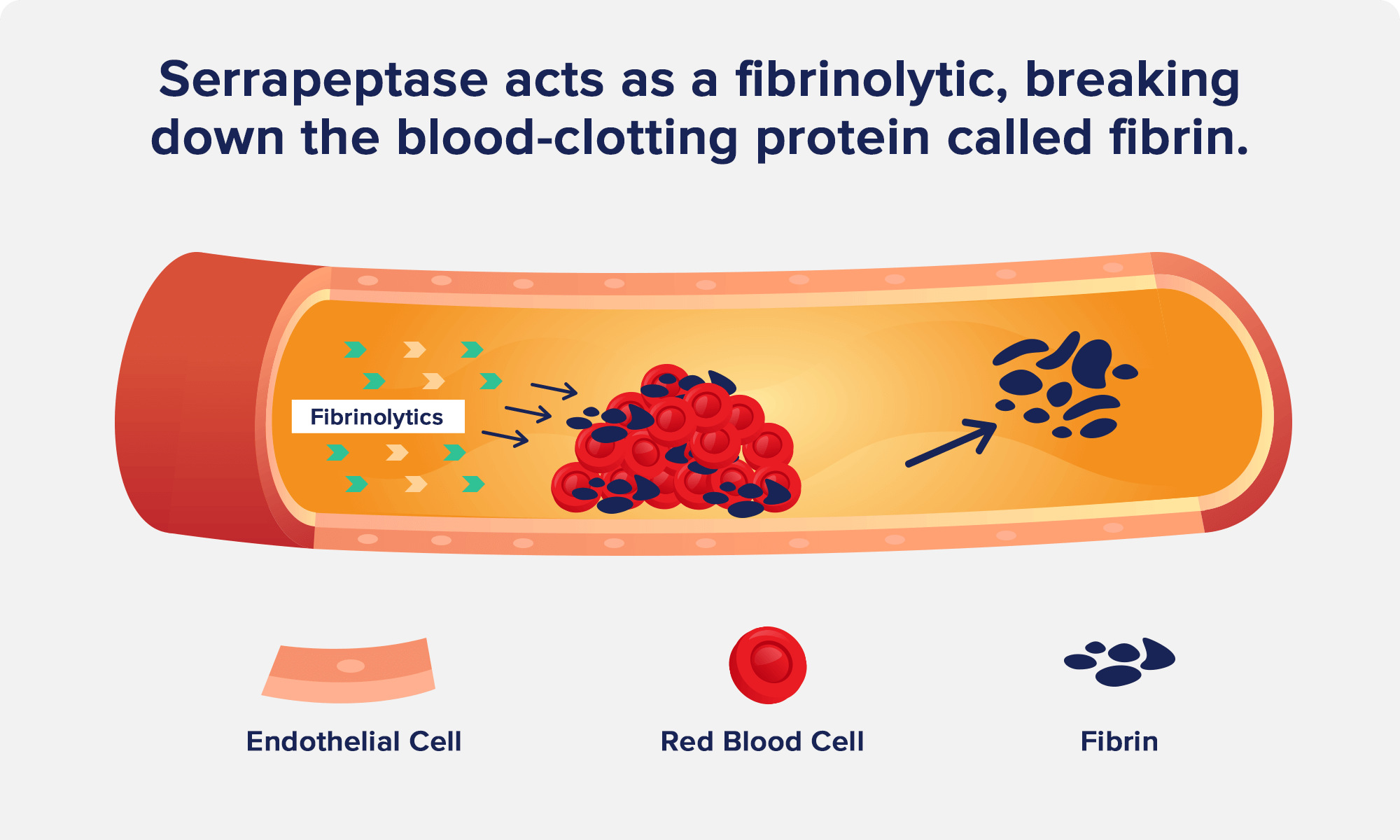
Serrapeptase acts as a fibrinolytic, breaking down the blood-clotting protein called fibrin.
As it dissolves fibrin and other dead tissue, serrapeptase is thought to also dissolve harmful arterial plaque deposits without damaging the arteries themselves.
Inflammation is another cause of atherosclerosis, so serrapeptase may be able to reduce this risk through its anti-inflammatory action.
However, we don’t have studies looking at the effects of serrapeptase on atherosclerosis in humans.
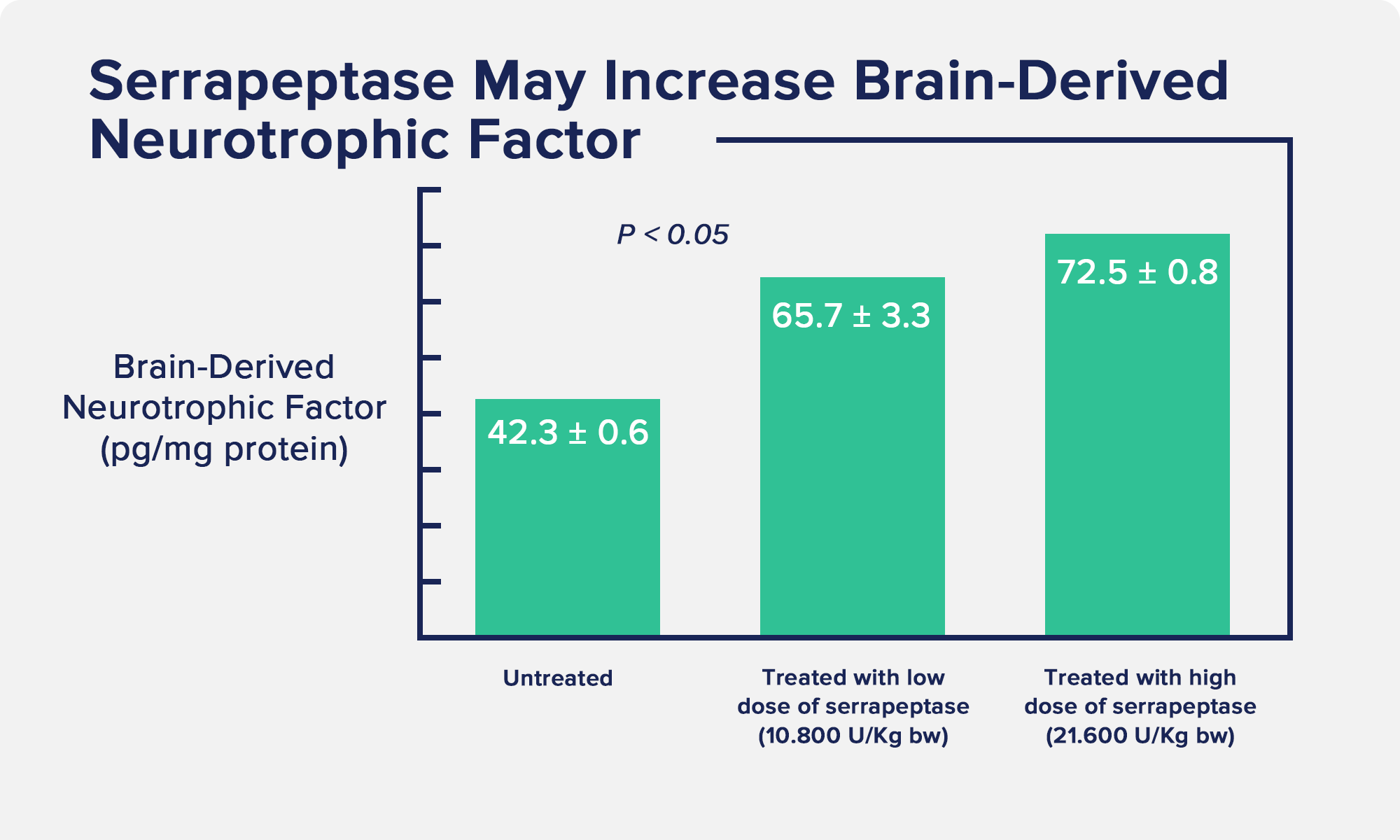
Lastly, some research has shown that serrapeptase may benefit some aspects of brain health.
One animal study found that serrapeptase (and another enzyme, nattokinase) significantly increased levels of brain-derived neurotrophic factor (BDNF), a protein that facilitates the growth and survival of neurons.
However, like with atherosclerosis, we need more research on humans to determine whether serrapeptase supplementation benefits brain health or cognition.
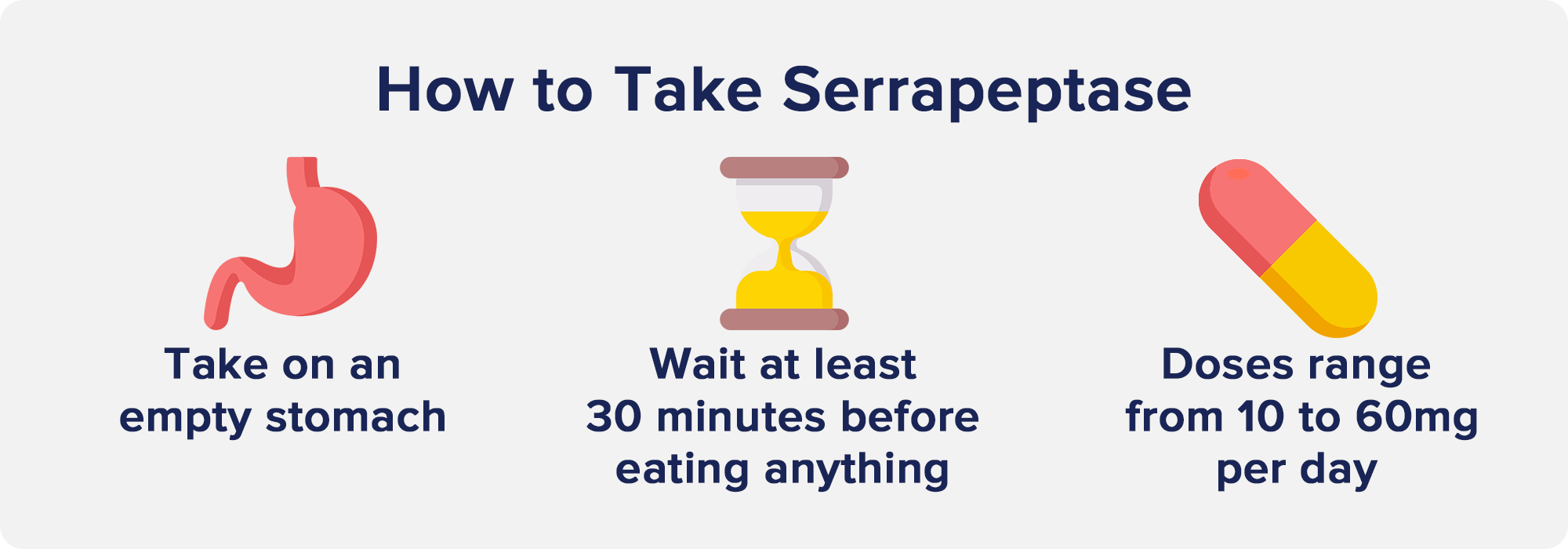
Enteric-coated tablets are the most common form of serrapeptase supplements, but you may also see them in capsule or gel form to be used topically.
Serrapeptase can be easily deactivated by stomach acid before being absorbed, so an enteric coating can protect it until it reaches the intestines.
It’s best to take serrapeptase on an empty stomach and wait at least 30 minutes, but ideally two hours, before eating anything.
Doses can vary, but most studies use amounts ranging from 10 to 60mg per day—however, supplements measure serrapeptase in units, with 10mg equaling 20,000 units.
Many supplements use doses ranging from 60,000 to 120,000 serrapeptase units.
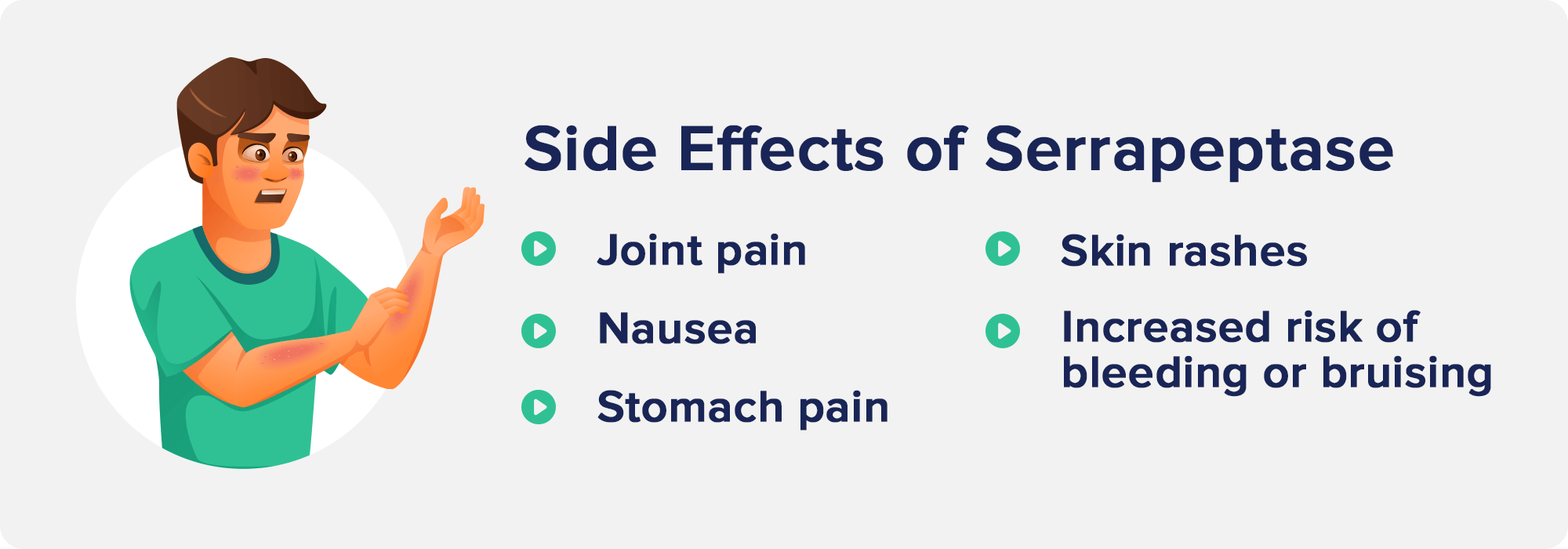
Serrapeptase is commonly used to reduce inflammation, swelling, and pain.
It may also reduce mucus buildup and blood clot formation.
Research shows that serrapeptase is beneficial for reducing pain, inflammation, and swelling.
It’s also been found to amplify the effectiveness of antibiotics, as it breaks down bacterial biofilms.
However, we need more research on serrapeptase’s effects on mucus reduction and brain health.
Studies on serrapeptase have generally only used shorter-term durations, such as one month or less.
There is not yet enough information about serrapeptase to recommend taking it daily for longer periods of time.
It’s best to take serrapeptase on an empty stomach—and wait at least 30 minutes, but ideally two hours before eating anything.
Subscribe now and never miss anything about the topics important to you and your health.
1 Comment
Does serrapeptase or nattokinase break down collagen or facial fillers and cheek inplants?